Salmon fishing seasons set and will likely provide some good times depending on the marine area this summer and fall Leave a reply
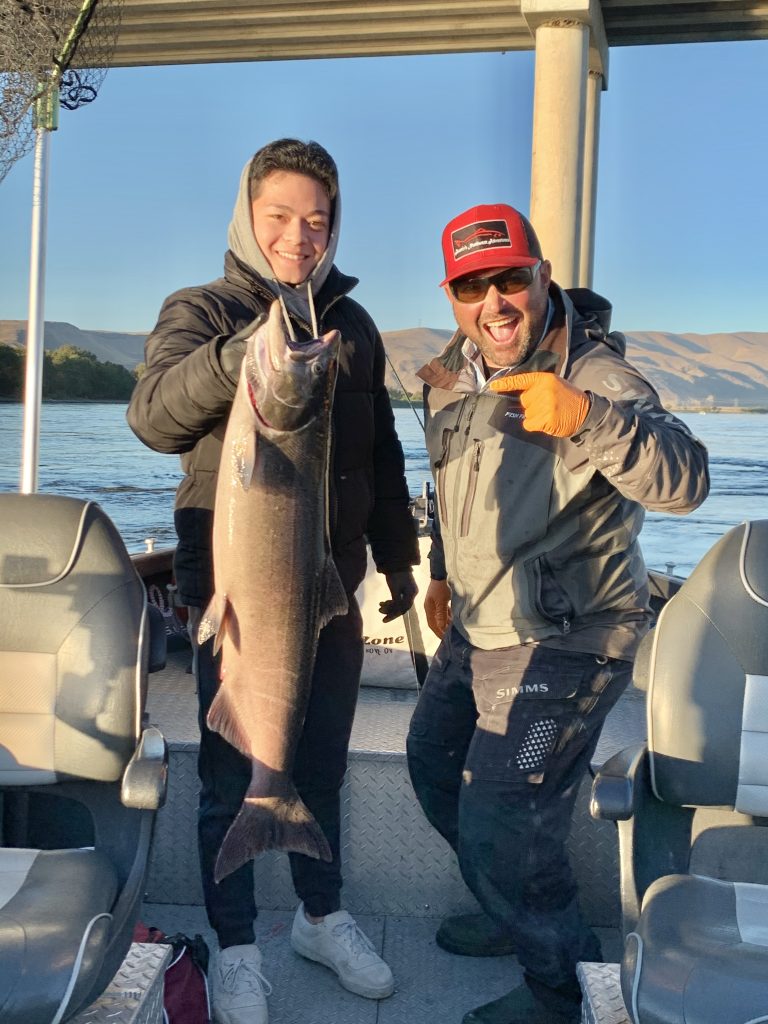
Contributed by Mark Yuasa
The salmon seasons set for 2022-2023 should provide some opportunities worth getting excited about this summer and fall as the Pacific Fishery Management Council wrapped up their joint meeting this past week with state, tribal and federal fishery managers.
The process in developing Puget Sound salmon seasons continues to be a huge undertaking for the Washington Department of Fish and Wildlife (WDFW) fishery managers with ever dwindling salmon returns or complex issues related to recovery and conservation just to name a few matters in question.
“Within the box of issues and challenges looming during this process, I feel (WDFW) did a pretty amazing job crafting fisheries that fell within the conservation objectives,” said Carl Nyman, owner of Fish Finders Private Charters in Seattle and member of the Puget Sound Sport Fishing Advisory Board.
“By engaging in enough talks early on with the comanagers we had very few surprises,” Nyman said. “The department was also really efficient in getting all their ducks in a row to create a balancing act of listening to the needs of the public and input from the advisor group.”
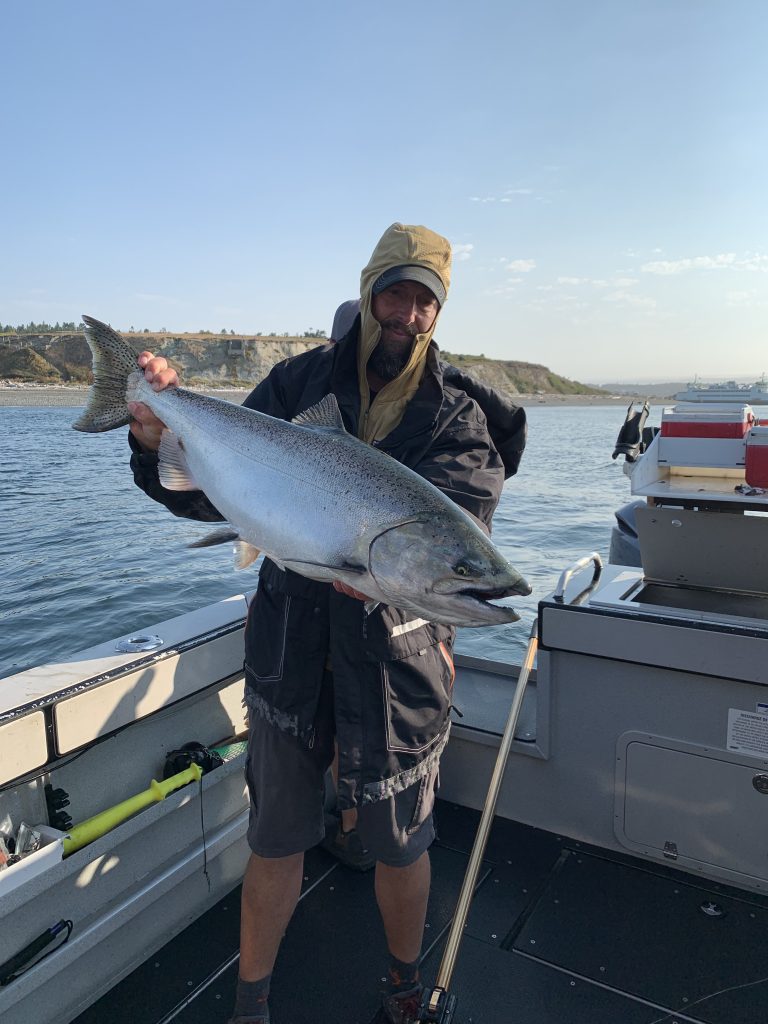
What it amounted to is a summer hatchery-marked Chinook fishery in the San Juan Islands, and northern and central Puget Sound (Marine Areas 7, 9 and 10 that begins on July 14 which is slightly sooner than in the past several years. Fishing in Areas 7 and 9 will be open Thursdays to Saturdays. This allows WDFW to assess the fisheries on a weekly basis to see if additional days can be added on after the initial opener.
In Marine Area 7 once the 1,800 Chinook quota is achieved (up from 1,382 in 2021 and 1,562 in 2020) it will close and then reopen on Aug. 16 to Sept. 30 for hatchery coho only. In Marine Area 9 it will be open July 14-16 and possibly July 21-23 if enough of the 4,700 Chinook quota (4,700 in 2021 and 5,600 in 2020) remains and is then open daily from July 28 to Sept. 25 and will switch to hatchery-marked coho only once the Chinook quota is achieved.
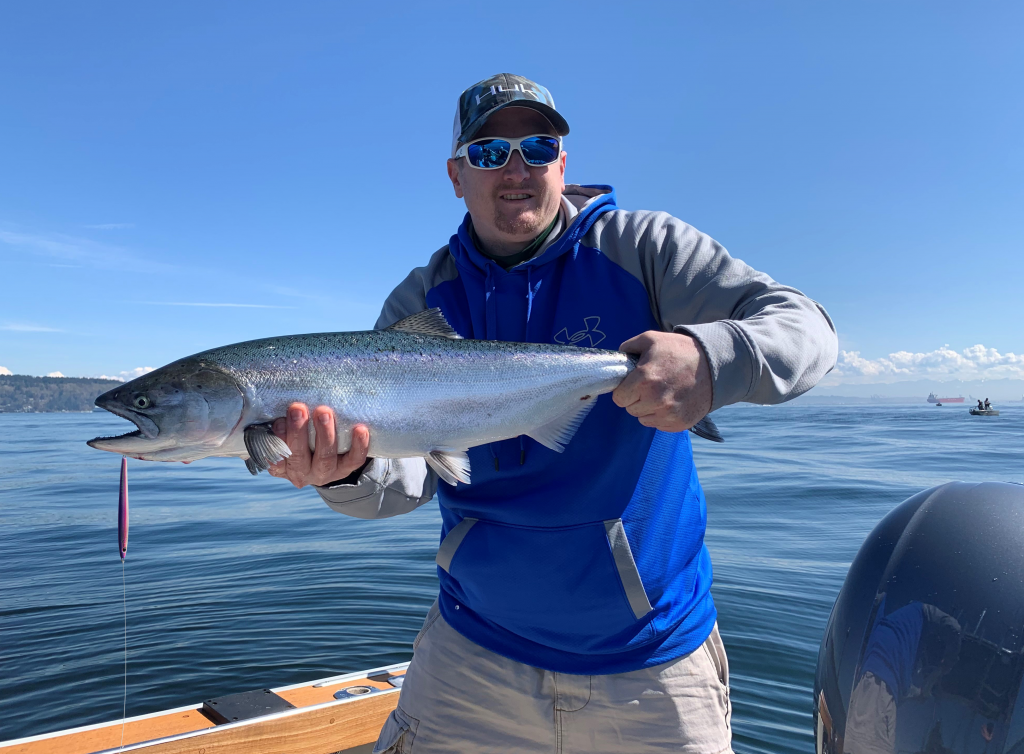
Initially WDFW had proposed an Aug. 1 or Aug. 15 start in the San Juan Islands at a time when impacts are somewhat less to the constrained stock of Stillaguamish River Chinook and would’ve led to a more fluid start right into the coho season, but sport anglers during public meetings insisted on an earlier start when fishing is better in the island chain.
“Strong catch rates and fishing pressure led to some early closures in these areas last year, and we wanted to make sure we do not exceed our catch allocations in 2022,” Kyle Adicks, the WDFW intergovernmental salmon manager said in a news release. “We heard from many anglers that they wanted an opportunity to fish in July in these areas, and this offers some opportunity while still hopefully preserving the chance to fish on what’s expected to be a solid coho run later in the summer.”
In central Puget Sound (Marine Area 10) the fishery targeting coho only will open June 16 through July 13, and then the hatchery-marked Chinook fishery is open daily from July 14 through Aug. 31 and retaining hatchery Chinook could close sooner if the 3,966 quota is achieved (3,718 in 2021 and 4,100 in 2020). Fishing then remains open for all coho from Sept. 1 through Oct. 31. The 2023 hatchery winter Chinook fishery is open Feb. 1 through March 31 with a 594 quota (836 in 2021 although fishing was open sporadically from Jan. 1 through March 31).
There will also be a small window of opportunity in inner-Elliott Bay from Aug. 6-9 and additional openings may occur.
One of the highlights will be south central Puget Sound (Marine Area 11) where hatchery-marked Chinook will open June 1 through Sept. 30 (opened on June 16 in 2021) and closes once the Chinook quota is achieved. The June Chinook catch quota is 580 (431 in 20210) and remaining summer quota is 2,816 (2,656 in 2021). Area 11 is open for coho only from Oct. 1-31, and open Nov. 1 through Dec. 31 and could close sooner if the 237 hatchery Chinook catch quota is achieved (237 in 2021).
Most inner-Puget Sound areas open for summer Chinook fisheries will have a two salmon daily limit of which only one may be a hatchery-marked Chinook. Be sure to check the WDFW website for specifics on catch limits that differ by area.
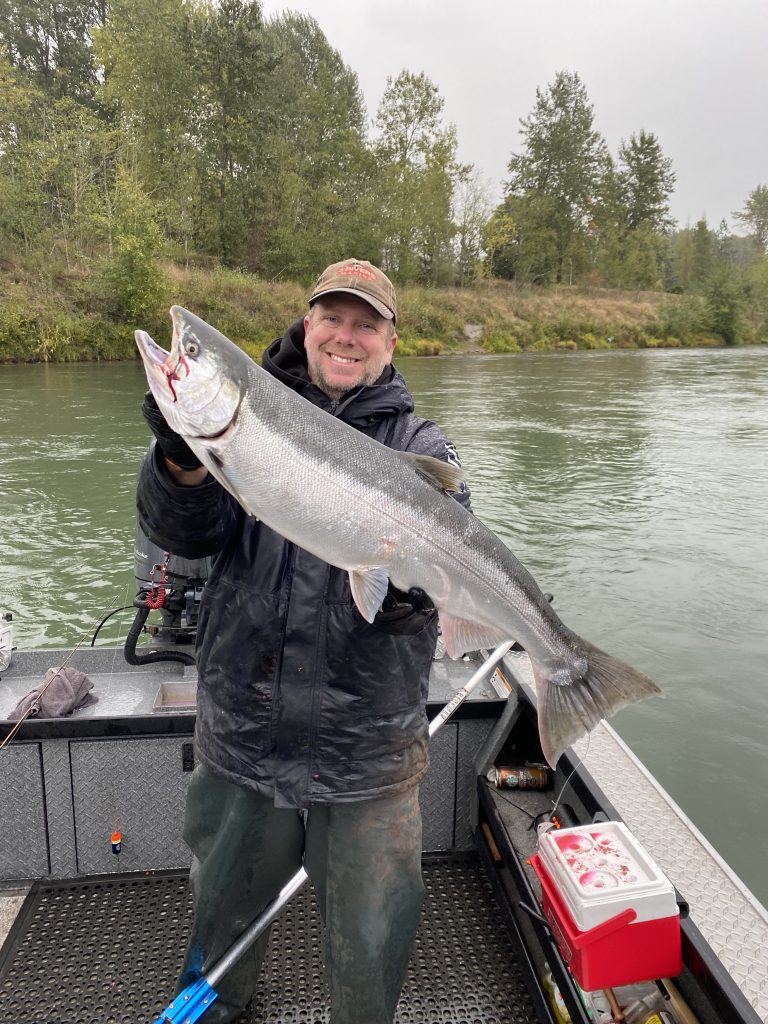
In the Strait of Juan de Fuca, Sekiu (Marine Area 5) opens July 1 through Aug. 15 for hatchery-marked Chinook and coho, and the Chinook fishery could close sooner if the 3,890 catch quota is achieved (4,077 in 2021). Marine Area 5 is open Aug. 16 through Sept. 28 for a hatchery-marked coho fishery. The 2023 winter hatchery Chinook season will be open March 1 through April 30 with a Chinook quota of 1,726.
The eastern Strait of Juan de Fuca, Port Angeles (Marine Area 6) – west of a true north/south line through the #2 Buoy immediately east of Ediz Hook – opens July 1 through Aug. 15 for hatchery-marked Chinook and coho, and the Chinook fishery could close sooner if the catch quota 6,050 is achieved (4,769 in 2021). The area east of the of the boundary is open July 1 through Aug. 15 for hatchery-marked coho only. All Marine Area 6 is open Aug. 16 through Sept. 28 for a hatchery-marked coho fishery. The Dungeness Bay hatchery coho only fishery is open Oct. 1-31.
In other positive news, the east side of Whidbey Island (Marine Area 8-1) will open Aug. 1 through Oct. 9 for all coho only. Area 8-2 will open Aug. 13 through Sept. 19 – open south and west of a line between the Clinton and Mukilteo ferry docks for hatchery-marked coho only.
The Tulalip Bay Terminal Chinook Fishery will be open May 28 through Sept. 7 (Fridays through noon Mondays only of each week) and there may be intermittent closures from July 15-Aug. 15. The Tulalip area will also be open Sept. 12-27 (weekends only).
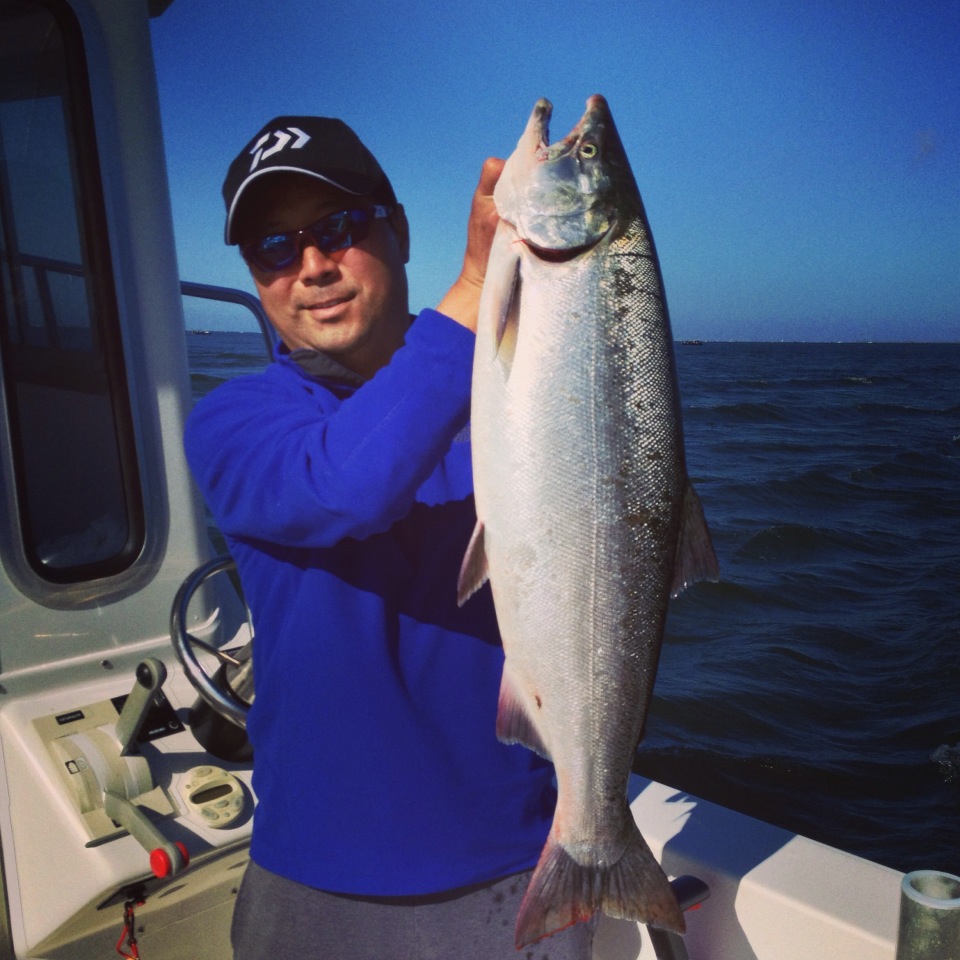
In southern Puget Sound (13) fishing is open year-round for salmon. From July 1 to Sept. 30 the hatchery chinook minimum size limit is 20 inches; release wild coho and chinook. From Oct. 1 to June 30 of 2022 the hatchery chinook minimum size limit is 22 inches; release wild coho and chinook and all chum.
Hood Canal south of Ayock Point (12) opens July 1 to Sept. 30 for coho and hatchery-marked Chinook and a daily limit of four with a minimum size limit of 20 inches, plus release chum. Areas north of Ayock Point are open Sept. 1 to Oct. 31, but anglers must release all chinook and chum. The entire canal opens Nov. 1-30 for coho, and Quilcene Bay only is open Aug. 1-31 for a fishery directed at coho only.
There will also be a variety of bubble and terminal fisheries in several areas like Sinclair Inlet, Hoodsport Hatchery Zone and Bellingham Bay as well as piers open year-round for shore-bound anglers.
While Puget Sound wild Chinook have been an ongoing issue for several years, it looks like the overall 2022 forecast is up 6% compared to 2021 forecast but still 40% down from the 10-year average. The 2022 Puget Sound hatchery Chinook forecast is up 7% compared to 2021 forecast and 5% up compared to the 10-year average.
The 2022 Puget Sound-wide wild Chinook forecast is 28,992 (26,918 in 2021) and the hatchery forecast is 201,059 (202,185 in 2021).
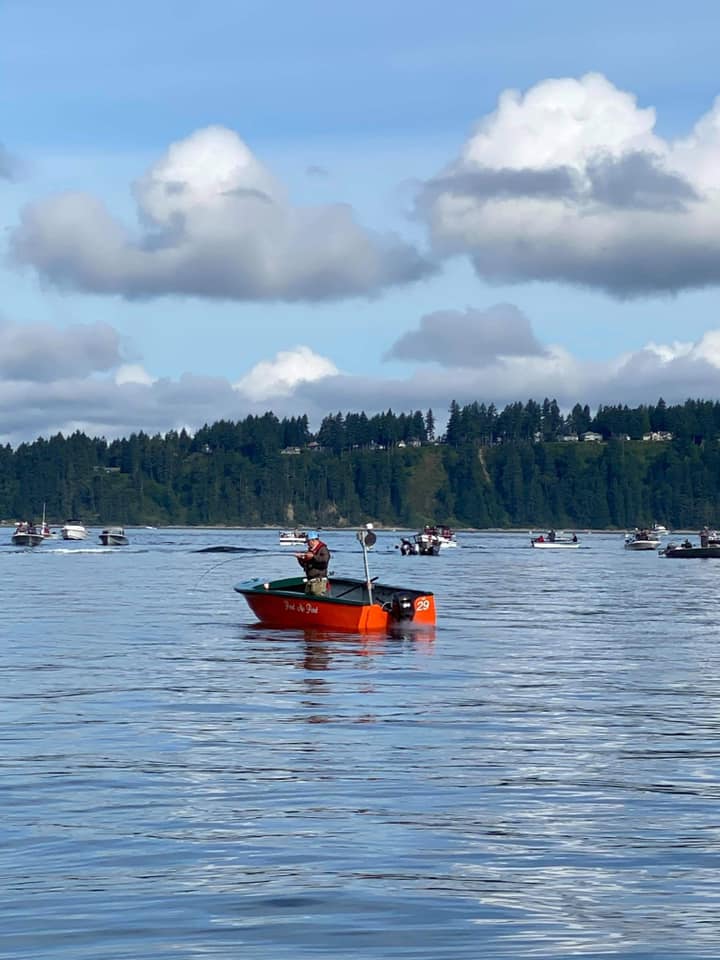
The Puget Sound-wide hatchery coho forecast shows an 8% improvement and wild coho are up 9% compared to 2021 forecast. The recent 10-year average for hatchery coho is up 61% and the wild coho is up 29%.
The combined Puget Sound hatchery and the wild coho forecast is 636,952 compared to 614,948 in 2021; 504,604 in 2020; 708,521 in 2019; and 557,149 in 2018. A dissection of predicted coho returnees, 387,722 are hatchery and 249,230 are wild (369,059 and 245,889 in 2021; 341,895 and 162,709 in 2020; 417,319 and 293,980 in 2019; and 307,975 and 249,174 in 2018).
Fishery managers will continue to keep tabs on wild coho returns to rivers such as the Snohomish, which remains in a rebuilding status after experiencing poor escapements in recent years.
The Snohomish wild coho spawning escapement goal is 55,000 and expects a 2022 forecast of 64,218 wild fish (60,000 in 2021) and 22,559 hatchery fish (29,938).
Coastal and Columbia River salmon opportunities
The 2022 Columbia fall chinook and coho runs are a huge improvement over the past few years, and they’re the key drivers to what should be a rather decent summer season off the entire coast and Columbia River.
This is due to a prediction of 484,900 fall Chinook in 2022 which is slightly higher than the 2021 actual return of 481,300 but below the forecast of 580,800.
The lower river “tule” hatchery Chinook (a driver for ocean salmon fisheries) is predicted at 73,000 (73,100 was the forecast and 74,700 was the actual return in 2021) and 89% of the 10-year average.
Coho are the star of the show in 2022, and this could be another banner year with a forecast in 2022 of 1,225,900 (1,732,900 was the forecast and 1,114,500 was the actual return in 2021). You’d need to look back to at least 2015 when the forecast was 1,015,000 to find anything closely resembling the 2022 forecast and 2021 actual return.
A key driver in limiting the ocean fisheries last year was the Queets River, which saw a poor return of 15,699 (11,780 were hatchery and 3,919 were wild), although much improved in 2022 and a forecasted return of 40,374 (22,214 are hatchery and 18,160 are wild) along with other coastal coho forecasts that shouldn’t be a hinderance.
The ocean sport catch coast-wide quota is 27,000 Chinook (27,250 in 2021) and 168,000 hatchery-marked coho (70,000 in 2021). The “Total Allowable Catch” for ocean sport and non-tribal fisheries is 54,000 Chinook (58,000 in 2021) and 200,000 hatchery-marked coho (58,000 Chinook and 75,000 hatchery-marked coho in 2021; 45,000 and 25,000 in 2020; 27,500 and 159,600 in 2019; and 30,000 and 14,700 in 2018).
Off the coast, La Push (Marine Area 3) and Neah Bay (Marine Area 4) will open for salmon retention beginning June 18; Ilwaco (Marine Area 1) on June 25; and Westport (Marine Area 2) on July 2. All areas are scheduled to remain open until Sept. 30 or until quotas are met, with species and size restrictions dependent on the area.
The highly popular Buoy 10 salmon fishery at the Lower Columbia River mouth is scheduled to be open Aug. 1-24 with a two-hatchery-salmon limit (only one Chinook), followed by any Chinook from Aug. 25-Sept. 7. A three hatchery-marked coho daily season begins Sept. 8-30 followed by a Chinook fishery reopening in October.
Further up the Columbia from the west end of Puget Island to Warrior Rock, is open Aug. 1 through Sept. 7 for two salmon (hatchery-marked coho only and one Chinook only) and reopens Oct. 1 with the same species rule limits. The area from Warrior to Bonneville Dam is open Aug. 1 through Sept. 13 and a daily limit of two salmon (hatchery-marked coho only and one Chinook only. A limited summer Chinook fishery from the Astoria-Megler Bridge to Bonneville Dam will be open June 16-22 with a two hatchery-marked Chinook daily limit. The summer Chinook fishery from above Bonneville Dam to Tri-Cities is open June 16 through July 31. Sockeye retention is off limits in both areas of the Columbia mainstem.
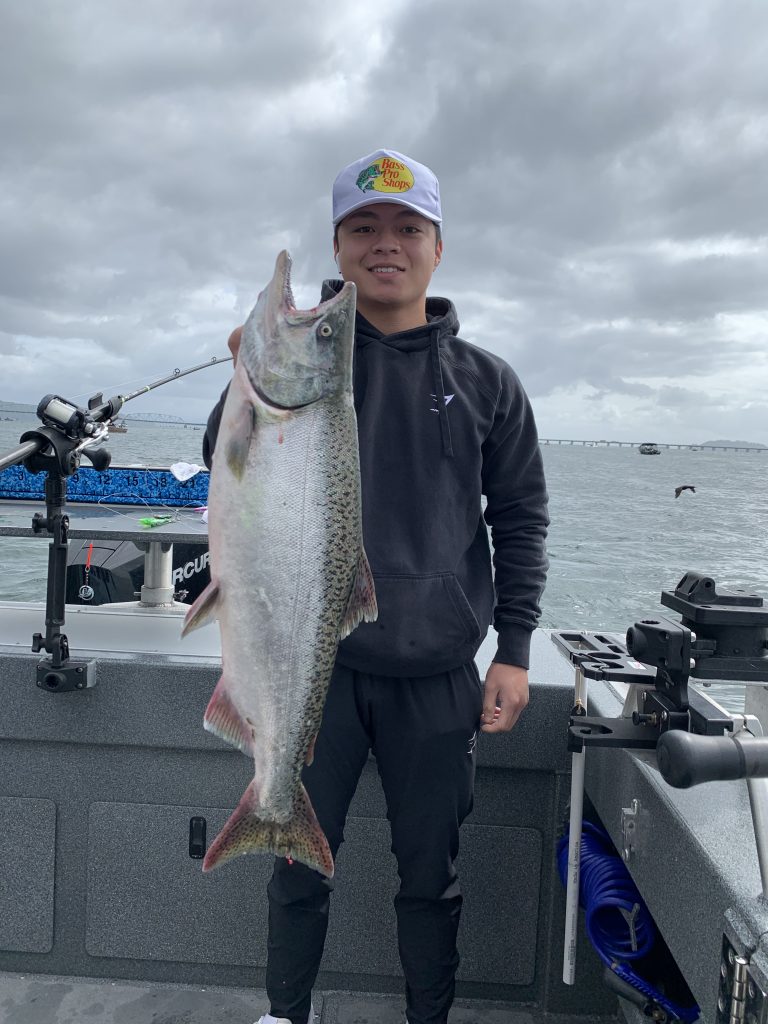
Salmon fishing seasons for the ocean are as follows:
NEAH BAY: 6,110 Chinook and 17,470 hatchery-marked coho (5,825 and 5,730 in 2021 and 4,700 and 2,340 in 2020). Open daily during June 18 to Sept. 30 or until quota is achieved, for all salmon, except no chum beginning Aug. 1 with a two salmon daily limit; all coho retained must be hatchery-marked with missing adipose fin. Chinook minimum size is 24 inches. Beginning Aug. 1, chinook non-retention east of the Bonilla-Tatoosh line.
LA PUSH: 995 Chinook and 4,370 hatchery-marked coho (1,300 and 1,430 in 2021 and 1,100 and 580 in 2020). Open daily beginning June 18 through September 30 or until quota is achieved, for all salmon, except no chum beginning Aug. 1 with a two salmon daily limit; all coho retained must be hatchery-marked with missing adipose fin. Chinook minimum size is 24 inches. Bubble fishery is open Oct. 5-8 or could close sooner if 125 Chinook quota is caught.
WESTPORT: 12,070 Chinook and 62,160 hatchery-marked coho (12,925 and 20,440 in 2021 and 10,500 and 8,330 in 2020). Open daily July 2 through Sept. 30 or until quota is achieved. All salmon with a two salmon daily limit and no more than one may be a Chinook; all coho retained must be hatchery-marked with missing adipose fin. Chinook minimum size is 22 inches.
ILWACO: 7,700 Chinook and 84,000 hatchery-marked coho (7,200 and 42,400 in 2021 and 5,800 and 11,250 in 2020). Open daily from June 25 through September 15 or until quota is achieved. All salmon with a two salmon daily limit and no more than one may be a Chinook; all coho retained must be hatchery-marked with missing adipose fin. Chinook minimum size is 22 inches.
A comprehensive list of statewide freshwater salmon fisheries was also decided, and can be found along with detailed marine fisheries on the WDFW website. More information on the North of Falcon process and salmon forecasts can be found by clicking here.
(Mark Yuasa is a Washington Department of Fish and Wildlife Communications Consultant and longtime contributor to ESPN 710 KIRO The Outdoor Line. He also was the fishing and hunting reporter at The Seattle Times for 28 years.)

